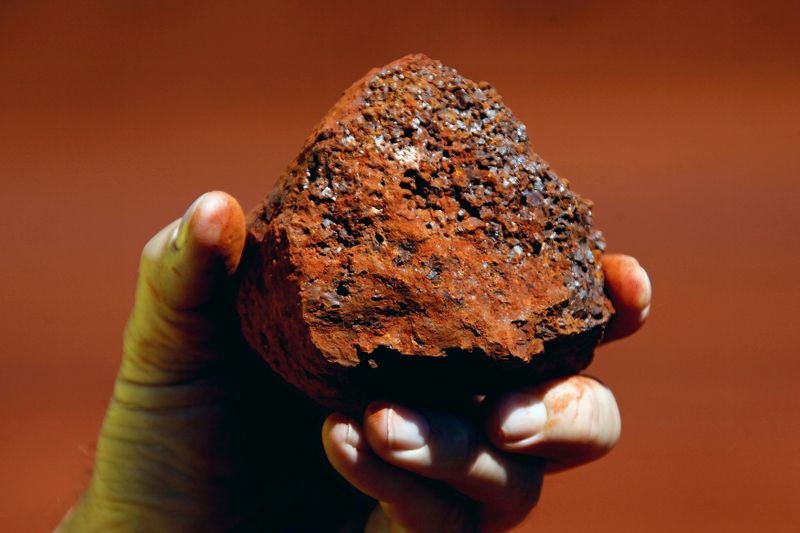Investing.com — Goldman Sachs revised its price forecast for the fourth quarter of 2024 in a note Monday, cutting the expected price from $100 per tonne to $85 per tonne.
This adjustment reflects growing concerns about oversupply in the global iron ore market, exacerbated by continued strong supplies and weakening demand from China.
Analysts at Goldman Sachs warn that without substantial supply cuts, the market will remain unbalanced, leading to further downward pressure on prices.
The spot price of 62% Fe iron ore recently fell to an almost two-year low of $90 per tonne, down 20% since July 2024.
However, global iron ore supply remains robust, with daily deliveries 2% higher than the same period last year.
This stable supply, coupled with sluggish demand, is driving the market into surplus.
“While India has reduced exports, without a significant recovery in demand (which we consider unlikely), we believe that further down the cost curve, producers will also need to reduce production to rebalance the market (as port inventories 30 million tons above the market). the September average from 2016-2023), the analysts said.
Although Chinese iron ore consumption shows signs of stabilization, overall demand remains subdued. The weak macroeconomic outlook for China, including a lowered GDP growth forecast to 4.7% for 2024, indicates that domestic demand will not provide sufficient support for a recovery in iron ore prices.
In addition, Chinese steel production, which is closely linked to iron ore demand, faces significant risks. After two months of decline, steel exports saw a 21% month-on-month increase in August, but the longer-term outlook remains uncertain as the potential for falling exports threatens to further depress demand.
Given the continued oversupply, Goldman Sachs analysts argue that producers lower on the cost curve will have to implement supply cuts to restore market equilibrium.
The brokerage suggests prices may have to fall further, to around $80 per tonne, to eliminate excess supply from India and other marginal producers.
This price would put pressure on supply even further along the cost curve, leading to the necessary production cuts.
In the short term, Chinese steel mills could replenish inventories ahead of the ‘Golden Week’ in early October, which could provide temporary support for iron ore prices.
Recent data showed iron ore inventories at steel mills rose 2.6% week-on-week, marking the biggest increase since the pre-Lunar New Year period.
However, this restocking is unlikely to offset the broader glut in the market.


